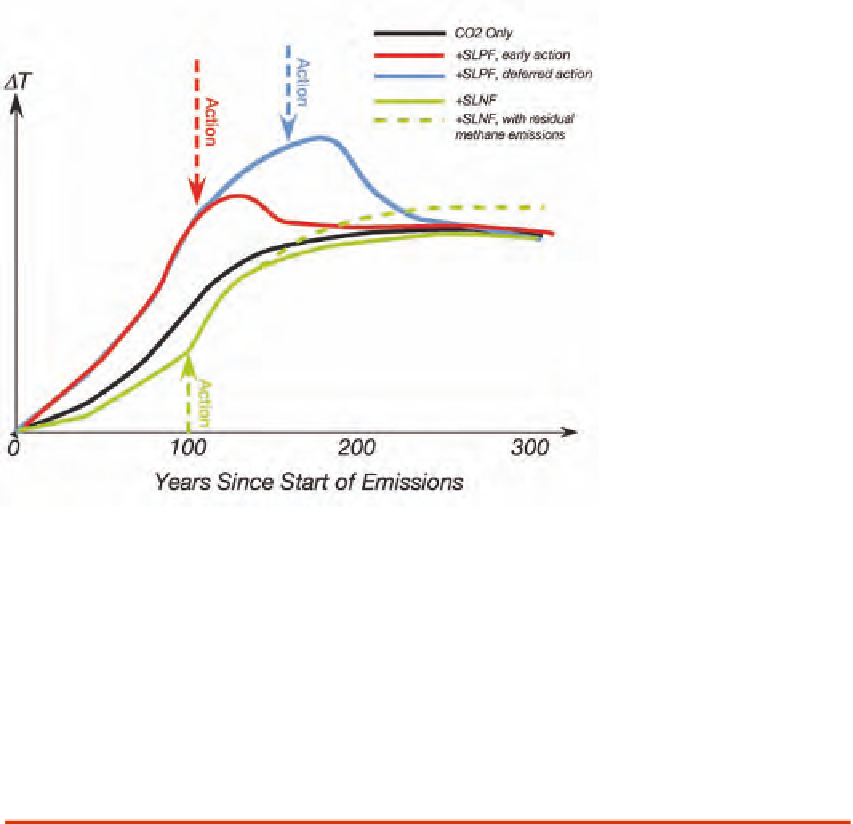Environmental Engineering Reference
In-Depth Information
FIGURE 2.8 Qualitative sketch of the time-course of future temperature under various scenarios for control
of emissions of short-lived radiative forcing agents. The time axis is given as time since the beginning of
significant anthropogenic emissions of greenhouse gases. It is assumed that CO
2
emissions are brought
to zero after 200 years. SLPF refers to short-lived positive forcing agents, like methane or black carbon on
snow or ice. SLNF refers to short-lived negative forcing agents, primarily aerosols. “Early Action” refers to
a scenario in which early, aggressive action is taken to mitigate emission of short-lived radiative forcing
agents, while “Deferred Action” refers to a scenario in which such actions are delayed. The green line shows
what happens if the aggregate of all short-lived forcings brought under control originally added up to a
cooling effect (so that reducing them warms the climate). The dashed green line is similar, except that it
assumes there is a residual methane emission that cannot be reduced to zero. The cumulative CO
2
emis-
sions are assumed to be the same in all of these scenarios.
was done
instead of
actions that could have reduced net cumulative car-
bon emissions, the long-term CO
2
concentration would be increased as a
consequence. Peak trimming in that case would come at the expense of an
increased warming that will persist for millennia. Carbon emission control
and short-term forcing agent control are two separate control knobs that
affect entirely distinct aspects of Earth's climate and should not be viewed
as substituting for one another.
It would be unrealistic to contemplate policies that would reduce black
carbon emissions while leaving reflecting aerosol emissions intact, given that
the diverse sources of emission yield an interlinked stew of absorbing and

